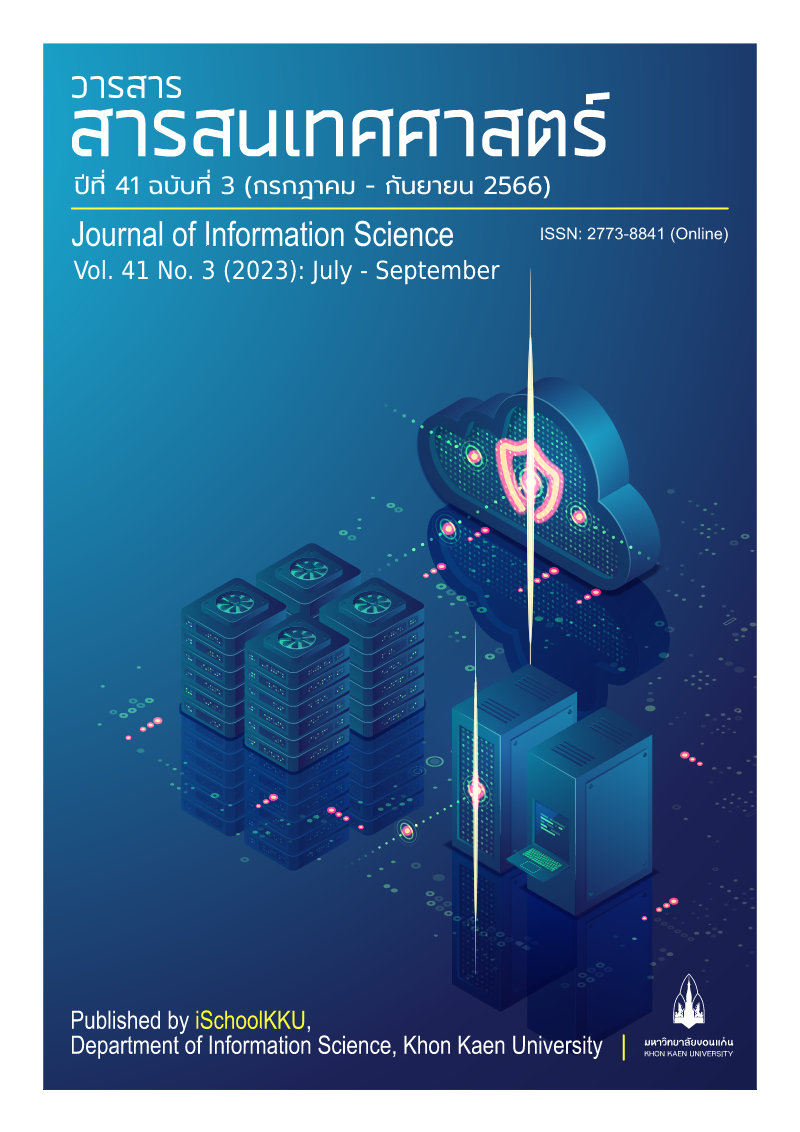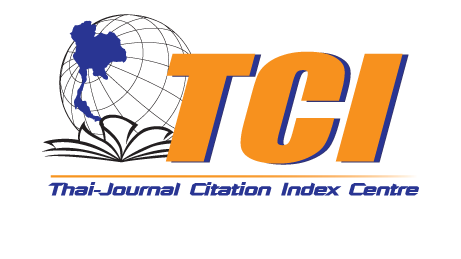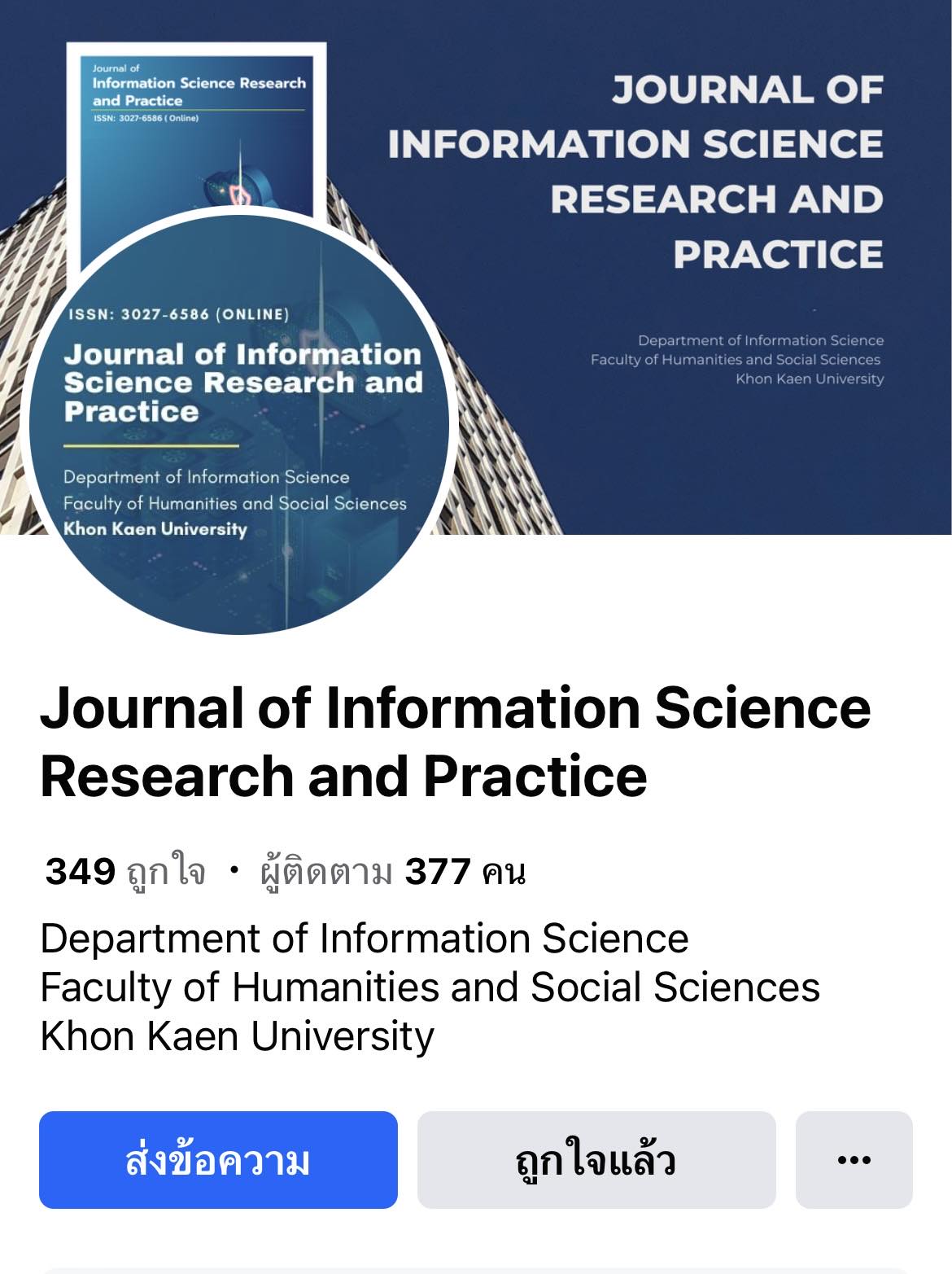Crowd Management Research Mapping Using Citation Data and Bibliometrics Analysis
DOI:
https://doi.org/10.14456/jiskku.2023.20Keywords:
Crowd management, Bibliometrics analysis, Citation analysis, Co-citation analysis, Knowledge map analysisAbstract
Purpose: To analyze research trends, related research fields, knowledge clusters, and the researcher network in crowd management research by using citation data and Bibliometrics analysis.
Methodology: A mixed method of quantitative and qualitative examination was applied for this study by using bibliometrics and content analysis. A content analysis based on the highly cited articles in each research knowledge cluster. The bibliography data including abstracts and citation information were collected from Web of Science (WoS) on the topic “Crowd Management” with a total of 4,675 records obtained. Afterward, the statistical methods were applied to analyze and evaluate the research knowledge clusters using the bibliographic analysis program namely Clarivate and CiteSpace for citation information, author, and document co-citation examination. A Gephi was used to visualize knowledge and scholar networks in this research area.
Findings: Crowd management research has been increasing steadily. The various research categories have been involved in crowd management research such as Engineering electrical, computer science and information system, communication, and management. The research knowledge clusters combine with 11 major clusters including crowdsourcing, crowd evacuation, resource management, emergency department, social carrying capacity, crowd counting, deep learning, kinetic theory, growth, pattern, and stochastic geometry. The influential author in this research field was Jing-hong Wang. The present findings are useful for public policymakers in crowd management by incorporating computer technology, communications, and management into a policy for effective crowd management.
Applications of this study: The researchers and related organizations involved in crowd management can review the relevant knowledge in this study to develop effective crowd management methods. In addition, this research conceptual framework can be applied to study knowledge maps and be a guideline for reviewing relevant literature in other specific research fields.
Downloads
References
Angkanawisalya, K. & Wichiensin, M. (2018). A solfware for traffic forecasting on road network. KMUTT Research & Development Journal, 41(3), 311-322.
Aw, A. & Rascle, M. (2000). Resurrection of "second order" models of traffic flow. SIAM journal on applied mathematics, 60(3), 916-938.
Ball, P. (2007). Crowd researchers make pilgrimage safer. Nature. https://doi.org/10.1038/news070115-13.
BBCNewsThai. (2022). Mob 11 June 2012: Teacher Kanokrat Chulalongkorn analyzes the return of the independent mass gathering in Din Daeng. (In Thai). Retrieved from https://www.bbc.com/thai/thailand-61775028.
Chen, C. (2006). CiteSpace II: Detecting and visualizing emerging trends and transient patterns in scientific literature. Journal of the American Society for Information Science and Technology, 57(3), 359–377. https://doi.org/10.1002/asi.20317
CNN. (2022). What we know about the deadly Halloween disaster in Seoul. Retrieved from https://edition.cnn.com/2022/10/30/asia/seoul-itaewon-halloween-crush-explainer-intl-hnk/index.html
Donthu, N., Kumar, S., Mukherjee, D., Pandey, N., & Lim, W. M. (2021). How to conduct a bibliometric analysis: An overview and guidelines. Journal of Business Research, 133. 285-296.
Dulebenets, M.A., Abioyeb, O.F., Ozguven, E. E., Moses, R., Boote, W.R., & Sando, T. (2018). Development of statistical models for improving efficiency of emergency evacuation in areas with vulnerable population. Reliability Engineering & System Safety, 182. 233-249. https://doi.org/10.1016/j.ress.2018.09.021
Galindo, G. & Batta, R. (2013). Review of recent developments in OR/MS research in disaster operations management. European journal of operational research, 230(2), 201-211.
Hirunsomsap, T. (2022). Fatal crowd crush: lessons learnt from the Itaewon tragedy in the Republic of Korea. Journal of Emergency Medical Services of Thailand, 2(2), 176-186.
Lin, J., Yang, D., Li, M., Xu, J., & Xue, G. (2017). Frameworks for privacy-preserving mobile crowdsensing incentive mechanisms. IEEE Transactions on Mobil Computing, 17(8). 1851-1864. https://doi.org/10.1109/TMC.2017.2780091
MGR Online. (2023). Ugandans crowded to watch New Year's fireworks and were stepping each other to death in a department store near the capital. (In Thai). Retrieved from https://mgronline.com/uptodate/detail/9660000000138
Paralee, P. & Pearkao, C. (2020). Overcrowding in emergency room of a university hospital. Songklanagarind Journal of Nursing, 40(2). 52-65.
Putpakdee, P. (2018). Assessment of walking in communities: Case studies of Hat Yai and Patong. (In Thai). Master thesis in Civil Engineering, Prince of Songkla University.
Reicher, S. (2001). The psychology of crowd dynamics. Handbook of Social Psychology: Group Processes, 1. 182–208.
Silpawattanatham. (2019). The 16th anniversary of the “Tsunami hit Thailand”, the severe loss from the catastrophic wave, 26 December 2004. (In Thai). Retrieved from https://www.silpa-mag.com/this-day-in-history/article_43257
Surwase, G., Sagar, A., Kademani, B. S., & Bhanumurthy, K. (2011). Co-citation analysis: an overview. Retrieved from http://eprints.rclis.org/17524/1/Co-citation.pdf
Thairath Online. (2022). Dissolve the rally in 2010, 12 years have passed but no one has been held accountable for the dead people. (In Thai). Retrieved from https://plus.thairath.co.th/topic/speak/101528
Vermuyten, H., Beliën, J., De Boeck, L., Reniers, G., & Wauters, T. (2016). A review of optimisation models for pedestrian evacuation and design problems. Safety science, 87. 167-178. https://doi.org/10.1016/j.ssci.2016.04.001
Wang, J. H., Lo, S. M., Sun, J. H., Wang, Q. S., & Mu, H. L. (2012). Qualitative simulation of the panic spread in large-scale evacuation. Simulation, 88(12). 1465-1474. https://doi.org/10.1177/0037549712456884
Xu, M.L., Jiang, H., Jin, X.G., & Deng, Z.G., (2014). Crowd simulation and its applications: recent advances. Journal of computer science and technology, 29(5): 799–811. https://doi.org/10.1007/s11390-014-1469-y








